10 Companies You Didn’t Know Came From San Francisco
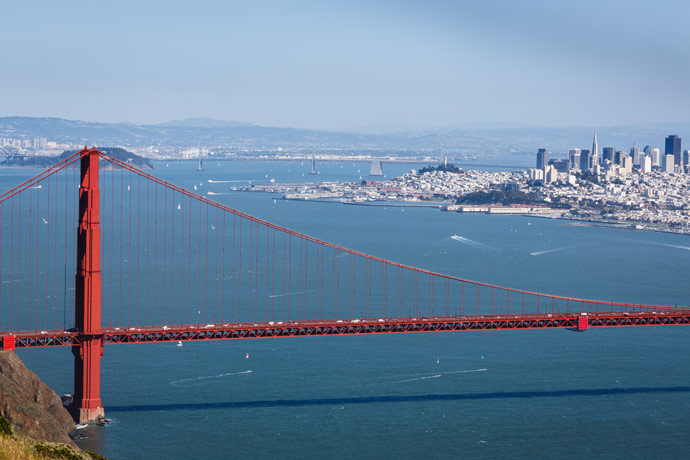

What pops into your head when you think of San Francisco? The Golden Gate Bridge, trolley cars, 49ers and Silicon Valley are likely some popular images. Often known as “The City By the Bay,” San Francisco is famous for hippies, liberal politics, its Chinatown and Rice-A-Roni. While the area is home to some of the world’s largest technology corporations and thousands of smaller startups, other household names have been getting their starts in the bay area for more than 150 years. Join WallStreetInsanity as we highlight our Top 10 companies you never knew came from San Francisco.
Ghirardelli
In 1849, Italian chocolatier Domingo Ghirardelli sailed from Peru to San Francisco in search of gold. He opened series of general stores in the San Francisco area, but the fifth of the great San Francisco fires destroyed his businesses in 1851. Ghirardelli salvaged his remaining assets and opened a coffee house, which was unsuccessful. The following year, he formed the Ghirardely and Girard confectionary company, the foundation of the modern-day Ghirardelli Chocolate Company. The company imported 200 pounds of cocoa beans in 1852 and its name was changed to D. Ghirardelli & Co. By 1885 it was importing 450,000 pounds of cocoa beans a year.
Ghirardelli died in 1894, but business continued to grow. In 1963, the Golden Grain Macaroni Company—maker of Rice-A-Roni—purchased Ghirardelli, which was later purchased by Quaker Oats in 1986. Quaker sold its Ghirardelli Chocolate division to a private investment group in 1992, and in 1998 it was acquired by the Swiss firm Lindt and Sprungli. Ghirardelli is the longest continuously-operating chocolatier in America, and one of the few in the nation to make its chocolate starting with the cocoa bean to the finished product.
Folgers
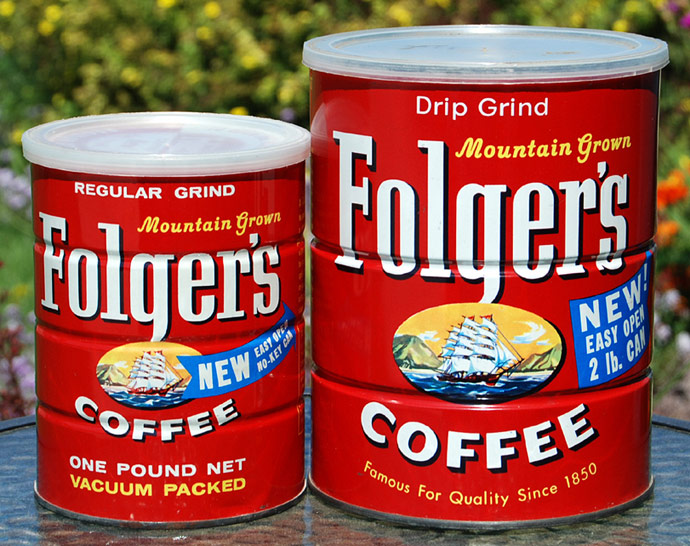
Image via Flickr/ Roadsidepictures
One of America’s favorite brands of coffee can be traced back to the California gold rush. James Folger and his two brothers traveled to San Francisco to mind for gold in 1849. While his brothers continued on to mining towns, 15-year-old James remained in San Francisco and worked as a carpenter for William H. Bovee, owner of the Pioneer Steam Coffee and Spice Mills, California’s first commercial coffee company. After working for Bovee for less than a year, Folger headed out to mine for gold, but took along samples of coffee, taking orders from grocery stores in the mining country. When Folger returned to San Francisco in 1865, he became a partner in the Pioneer Steam Coffee and Spice Mills. In 1972, Folger bought out the other partners and renamed the company J.A. Folger & Co.
When Folger suddenly died in 1889, his son James A. Folger II took over as president of the company and drastically expanded the brand, producing not only bulk-roasted coffee but also various grades of ground specialty blends. In 1963, Procter & Gamble purchased the Folgers Company and distributed the coffee nationally.
Levi Strauss & Co.
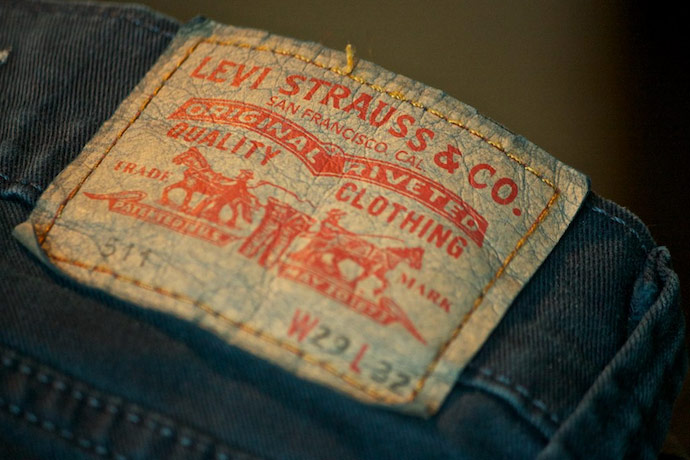
Image via Flickr/ marcycaster
Few inventions are as American as blue jeans, and the denim pants can be traced back to Gold Rush-era San Francisco. In 1853, Levi Strauss, a 24-year-old German immigrant set out from New York to San Francisco to open a dry goods store. Strauss sold items such as canvas for tents and wagon covers. According to legend, one prospector told her the real shortage was pants, and history was made.
First Strauss tried taking the canvas he already sold and turning it into overalls. But miners complained the pants were uncomfortable. So Strauss tried a new type of twilled cotton cloth from France, known as “serge de Nimes,” later known as denim.
Levi Strauss & Company first used its pocket stitch design in 1873 and putting rivets in its pants to increase their strength. On May 20, 1873, the company received US Patent No. 139,121, and “blue jeans” were born. The Two Horse logo, still in use today, was introduced in 1886 to demonstrate the strength of Levi’s clothing. The original “XX” jean was renamed Levi’s 501 in 1890 and is still the world’s best-selling clothing.
Levi Strauss & Co. is still headquartered in San Francisco and owned by Strauss’ descendants.
Del Monte
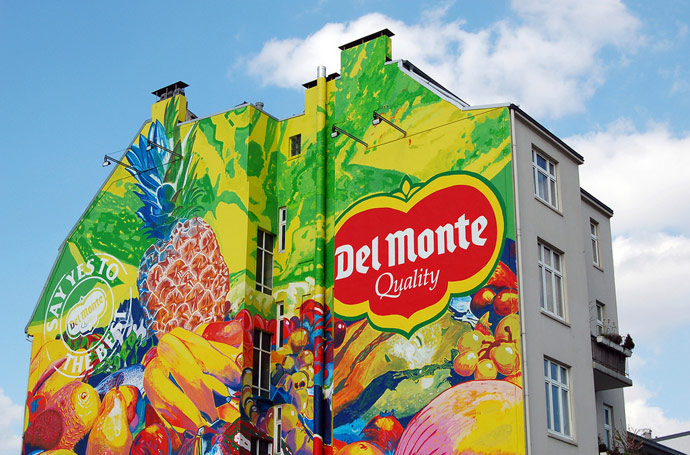
Image via Flickr/ p-d
The early origins of Del Monte Foods are somewhat muddled, but the name first appeared in the 1880s in relation to a premium coffee manufactured specifically for the Hotel Del Monte on California’s Monterey peninsula. When the manufacturer expanded its business in 1892, it kept the Del Monte name to brand its new line of canned peaches.
In 1906, when fire destroyed much of San Francisco, most of the city’s food processing facilities were destroyed. The rebuilt Del Monte Plant No. 1 became the world’s largest fruit and vegetable cannery.
In 1916, the California Fruit Canners Association, of which Del Monte had been a member since 1898, incorporated itself as California Packing Corporation, and began marketing products from its 20 canning companies and food brokerage house under the Del Monte brand. The company soon grew to include canneries in Washington, Oregon, Idaho, Utah, Alaska, Hawaii, Florida and the Philippines. The growth continued after World War II, and since the name California Packing Corporation became obsolete, the corporation took on the name Del Monte Corporation.
Coldwell Banker
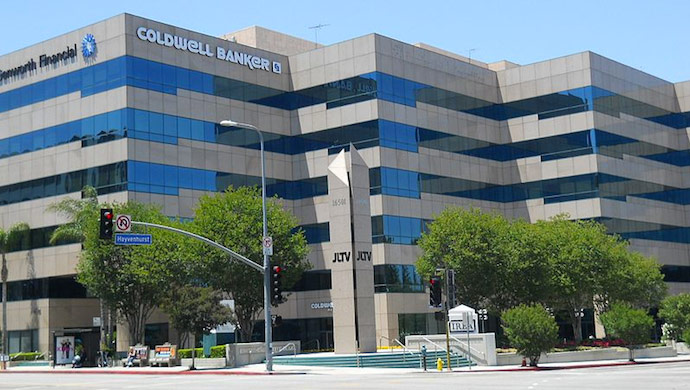
Image via Wikimedia Commons
San Francisco was devastated by an earthquake in 1906, leaving more than half of the city’s 400,000 residents homeless. At the time, it was common practice for real estate agents to purchase properties themselves, often at low prices from eager sellers, and sell them for huge profits, especially to residents left destitute from the disaster. In fact, since most of the city’s records were destroyed by fire, some brokers would even sell abandoned lots that weren’t theirs at all. Colbert Coldwell wanted to change the industry, so with two partners he formed Tucker, Lynch and Coldwell, placing the client’s best interest first and foremost. Benjamin Banker joined the firm in 1914 as a full partner, and the pair dedicated themselves to establishing an agency where customer service, honesty and integrity were of the utmost importance.
Under Coldwell’s policy, brokers could not profit from the sale of property. In fact, until the 1970s, Coldwell Banker brokers weren’t even allowed to own property other than their own homes. The ethical system of real estate brokerage was soon copied by the entire industry.
The original Coldwell Banker building still stands in San Francisco among modern-day skyscrapers. The tiny, three-story structure on Sutter Street is occupied by a deli, a yarn store and a nail salon, but inside its walls is the story of a firm that now consists of more than 4,000 offices and 126,000 agents in 30 countries around the world.
Bank of America
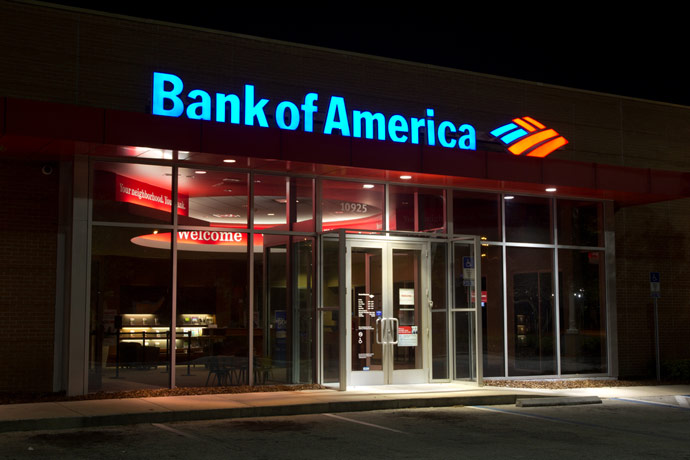
Image via Rob Wilson/Shutterstock
The second-largest banking system in the United States may trace its roots back to colonial times, but much of the Bank of America we know today was born in early 20th century San Francisco. Amadeo Giannini founded the Bank of Italy in 1904 to serve the city’s immigrant population. Shortly after the Bank of Italy’s establishment, San Francisco was devastated by the great earthquake and fires of 1906, leaving the bank’s structure a pile of rubble. Fortunately, the vault was intact.
Giannini was able to set up a makeshift office and became a driving force in the city’s reconstruction, lending money to anyone who was willing to rebuild. Doing business form a few planks laid across two barrels on San Francisco’s waterfront, Giannini confirmed loans with nothing more than a handshake.
A pioneer in branch banking, Giannini began opening branches of the Bank of Italy as soon as the California legislature authorized the practice, and by 1918 the bank had become the first statewide branch banking system in the United States with 24 branches. The same year, the Bank of Italy utilized the first interbranch clearing system in the nation, allowing customers to more easily transfer funds and forever changing the banking industry.
In 1929, Giannini merged with Bank of America, Los Angeles to create the nation’s largest banking institution. In 1930, the bank was renamed Bank of America.
Gap, Inc.
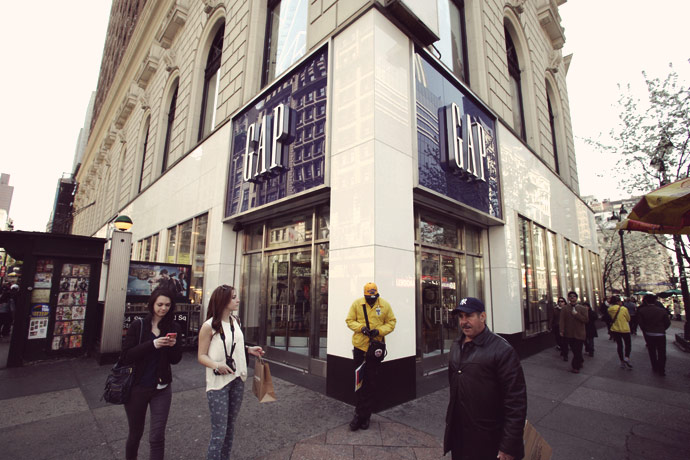
Image via Northfoto/Shutterstock
Donald and Doris Fisher founded the Gap in San Francisco in 1969 for one simple reason: Donald couldn’t find a good pair of jeans. The first store was opened on Ocean Avenue and sold Levi’s and LP records. While the Fisher’s opened the store on $63,000 capital, they made $2 million in revenue in the first year when the average cost of a pair of jeans was just $7.
According to urban legend, the Gap is actually an acronym for “Gay And Proud,” but according to Snopes.com, this simply isn’t true. The name of the retailer is, instead, an homage to “the generation gap,” a popular term in the 1960s.
Today, the Gap employs 136,000 people at more than 3,000 stores worldwide. In addition to Gap, GapKids, babyGap, GapMaternity and GapBody, the company also operates Banana Republic, Old Navy, Piperlime, Athleta and INTERMIX. And it’s still headquartered in San Francisco.
Sharper Image
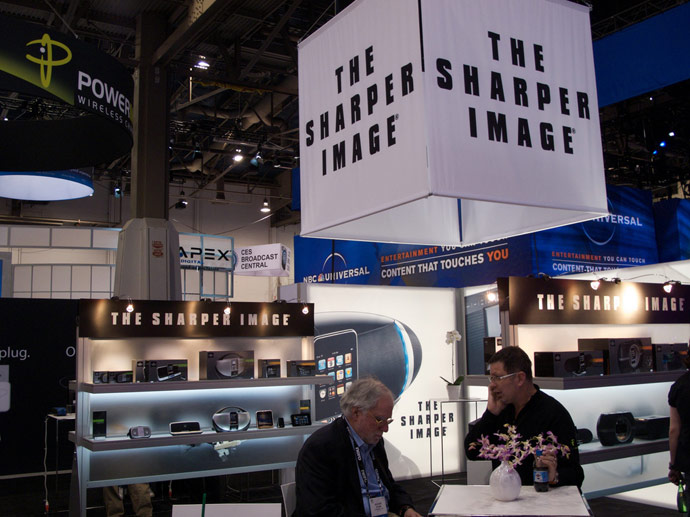
Image via Flickr/ K. Costin Photography
After attending law school in San Francisco, self-ascribed yuppie Richard Thalheimer thought he could make a profit selling high-tech stopwatches to fellow joggers. In 1977, he spent $1,000 on a magazine ad offering the digital wristwatches and soon sold his entire stock. Thalheimer took his profits and invested them into similar ads for mail-order gadgetry, such as telephones and calculators. In 1978, he incorporated his mail order business as the Sharper Image and published his first catalog the following year.
The Sharper Image’s mail-order profits soared throughout the 1980s. By 1985, the Sharper Image issued 42 million catalogs and reported $69 million in sales of high-tech toys. In the late 1980s, as mail-order sales began to decline, the Sharper Image began to open retail stores. Throughout the 1990s the company struggled to complete as new competition in electronics retailers continued to emerge. Ultimately, it filed for bankruptcy in 2008, but the Sharper Image brand was licensed to sell products through Best Buy, Bed Bath & Beyond, OfficeMax and Big 5 Sporting Goods.
Digg

Image via digg
A group of Internet entrepreneurs—led by tech whiz Kevin Rose— launched Digg.com with a $6,000 investment in San Francisco in 2004. The site was basically a community-based news aggregator. Users could vote stories up or down with a Digg button, and articles were then ranked by the number of positive and negative votes they received. By 2010 it held a huge online presence with more than 40 million users each month.
Of course, as is with any innovative technology, Digg was copied by many, and some social news sites developed better ways to share and rank links, including Facebook and Reddit. In order to compete, Digg underwent several redesigns, but in the end they may have only served to drive loyal users away. Although the likes of News Corp. and Google once offered to buy Digg for anywhere from $60 million to $200 million, the Web site was purchased for last year by Betaworks for a measly $500,000. Dismantling the once unstoppable company, LinkedIn paid $4 million for Digg’s patents and the Washington Post bought the Digg team for $12 million.
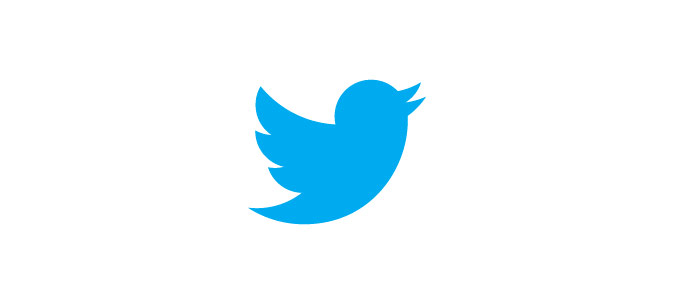
Image via Twitter
Digg may have been one San Francisco company that didn’t end in glory, but just the opposite is true when it comes to Twitter. The social network began as a brainstorming session among employees and investors of the startup Odeo in 2006. Jack Dorsey wanted to use an SMS service to communicate within a small group so—together with Evan Williams, Noah Glass and Biz Stone—devised a code named twttr. Dorsey published the first Twitter message March 21, 2006, “just setting up my twttr.”
Initially there was no app, users tweeted by sending a text to “40404.” The group texting program started to catch on in the San Francisco area, and in August 2006 when a small earthquake shook San Francisco, word spread quickly via Twitter. A phenomenon was born.
In late 2006, Williams bought back Odeo investors’ stock, and within five years those shares increase in value by about 1000 times.









































